Have you ever watched a professional athlete and thought, “I could do that if I had the chance.” For most who’ve ever thought that, and who were given a chance, it became clear very quickly that there’s a significant disconnect between perception and reality.
The same is true in the realm of survival and prepping. A few months into the 2020 Pandemic those who’d prepared for years with rice, beans, and other basics learned after a week or so that it’s not as easy as one thinks to survive on the same thing for very long. Yes, in an emergency situation it can be done. And yet, as many found out in mid 2020, it’s not a pleasant proposition. If you doubt this, I challenge you to eat the same thing for breakfast, lunch, and dinner for two months. Let us know in the Comment section below how you made out.
Many years ago my wife and I lived for almost a year with a Muslim family on a small Island in an Islamic country. This was part of our language and culture learning process. We had our meals with them, and ate what they ate. Aside from chicken and rice, they occasionally had local delicacies. Since refrigeration was not readily available, these were mostly based on various animal organs. My wife, far more adventurous than I in terms of food, partook. I politely declined. And so for almost a year I ate almost nothing but chicken and rice. I can tell you from experience that eating the same basic food every day can be done, and yet it takes a good deal of adjustment. For those unaccustomed to this it can be like a form of torture.
When we finally moved on and had our own place in the same Islamic country, my wife and I purchased a very inexpensive two-burner stove that sat on a concrete counter. It was similar to, yet a lot smaller than, the two kerosene burners shown in the image below. We found this picture in an old album. These outdoor burners belonged to another Muslim family with whom we lived for many months, and who were a bit more well-off. The large pot shown on one of the burners was what we used to boil water for drinking, and to add to the cold water in buckets we used to bathe.
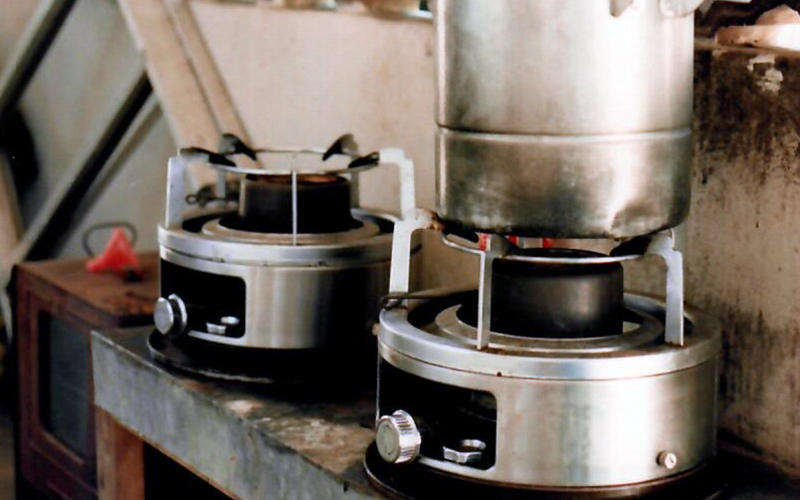
Pictured above just to the left of the burners and sitting on the ground is an old item that made life more enjoyable. It’s a sheet-metal box that served as a make-shift oven when placed on top of a kerosene burner or propane stove-top. I can’t adequately describe what a difference this made. My wife, an excellent cook and baker, made amazing treats using this “oven.” This included all manner of dinner casseroles, pies, pastries, and even cookies. These treats meant all the more to someone used to eating rice and chicken every meal, every day.
As you consider preparing for difficult times such as a grid-down scenario, it might be worth thinking about how you’ll cook. Without electricity or natural gas, many people would be limited to a propane grill. To make things much more palatable, you may want to consider a propane oven. The one pictured below is made by Camp Chef. This is their Deluxe Outdoor model, and it costs about $270. There’s also a Professional model that costs a bit more.
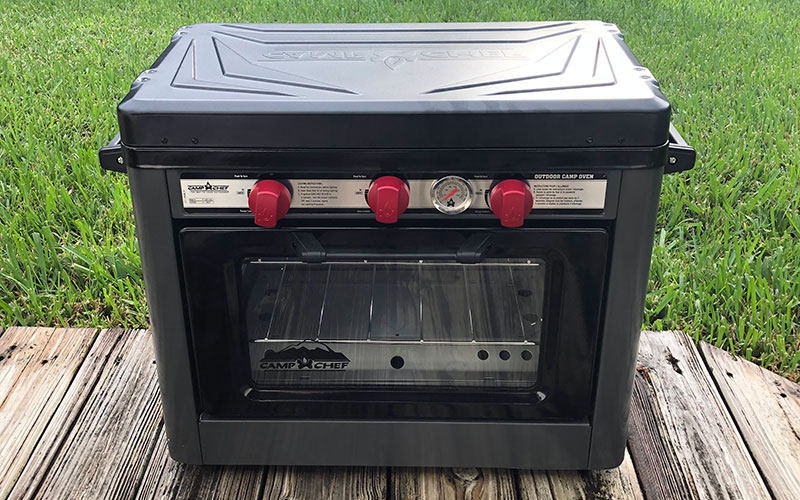
We’ve only used this twice, yet it has worked well. We can assure you it’s a huge upgrade from the sheet-metal boxes we used overseas. With the top folded down the unit measures about 19 inches high, 15 inches deep, and 26 inches wide. The last two measurements include the handles. It nicely fits a 13×9 inch baking dish inside the oven. This is a solid unit, and It weighs in at a hefty 35 pounds. Please see the company website for the internal oven dimensions and more detailed information.
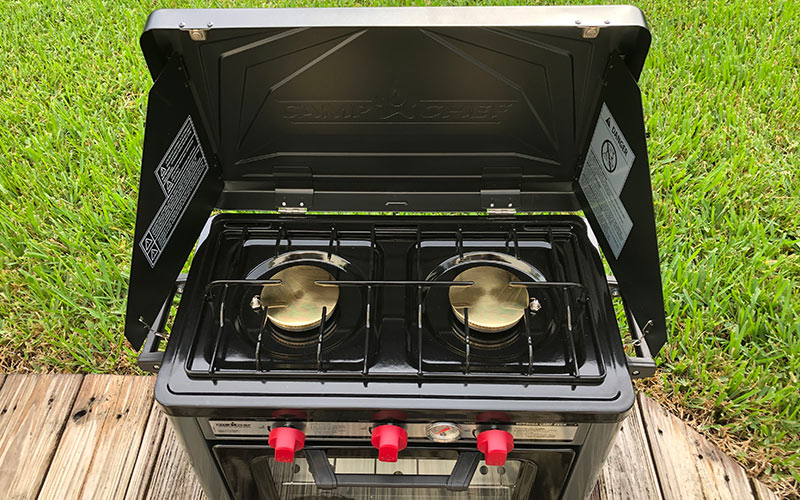
This image shows the top open and the twin stove-top burners. Both the burners and the oven run off the single LP gas inlet located on the back of the unit. You’ll need to purchase a separate adapter to connect it to your LP tank. These cost around $15.00.
We tested the unit by cooking fish sticks one day, and butter biscuits on another day. The oven heated up to 400 degrees in about 12 minutes. Variables include how far open one has the LP tank, and where one sets the dial for oven temperature. Both the fish sticks and butter biscuits were cooked perfectly.
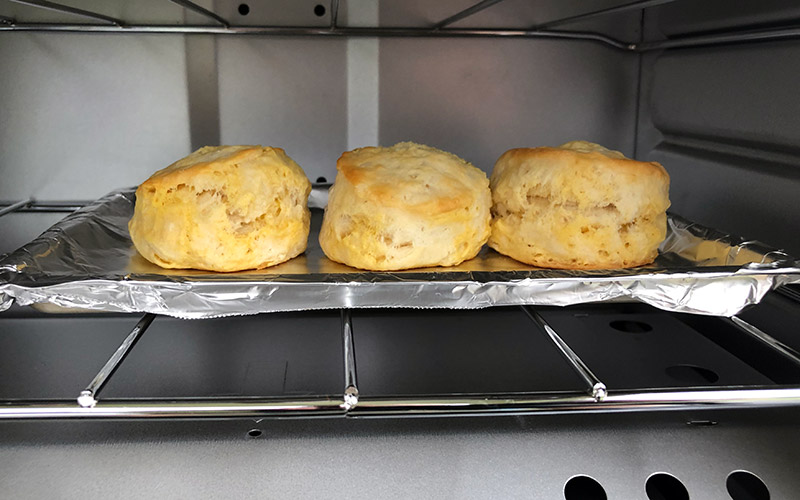
The one issue we had with the oven was that the built-in temperature gauge was completely unreliable. We tested this against my wife’s intuition and experience, a digital thermometer, and the oven thermometer shown in the image below. All three of these agreed that the built-in temperature gauge was useless. For example, it read 485 degrees when the other two thermometers agreed that the temperature was actually about 380. If you purchase this unit, we highly recommend getting a good oven thermometer like the one shown below. This cost about $12.00.
This will allow you to adjust the oven temperature while things are cooking. You can reach close to the exact temperature you want by adjusting the oven dial and the LP tank valve. If things get too hot, you can open the door for a few seconds. Once a temperature is reached, the oven seems to hold it quite well.
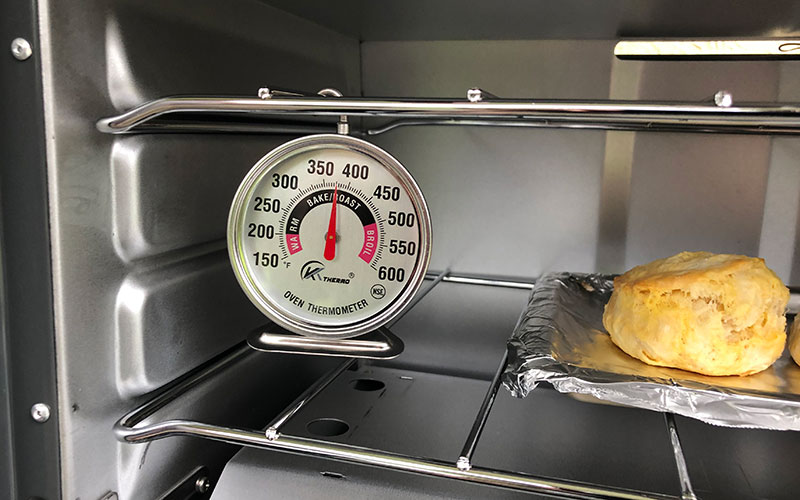
My wife and I lived in what many would consider to be uncomfortable circumstances for a number of years. The availability of even a basic oven made things more enjoyable. In fact, I once kidded my wife that with her baking skills and a simple oven we could enjoy “apocalypse cookies” while everything else in the world falls apart.
We hope you’ve found this helpful, and that you’ll consider adding some form of grid-down oven to your emergency preparations.
As always, remember that Panoplia.org has no affiliate relationships with manufacturers or retail suppliers, nor do we participate in third-party advertising. We simply share our views about gear and supplies that work well for us under hard use.

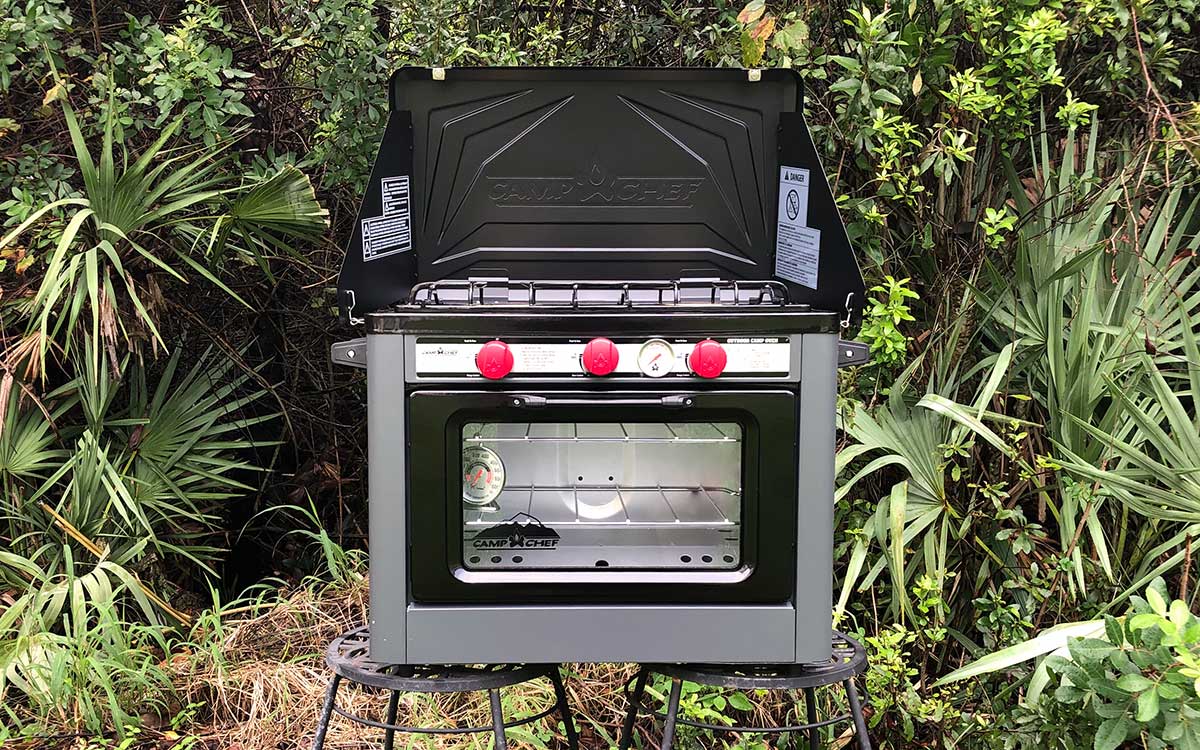


0 Comments